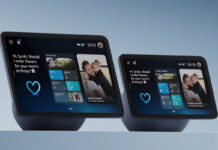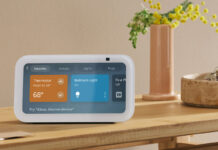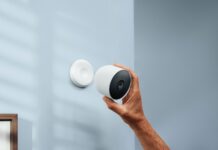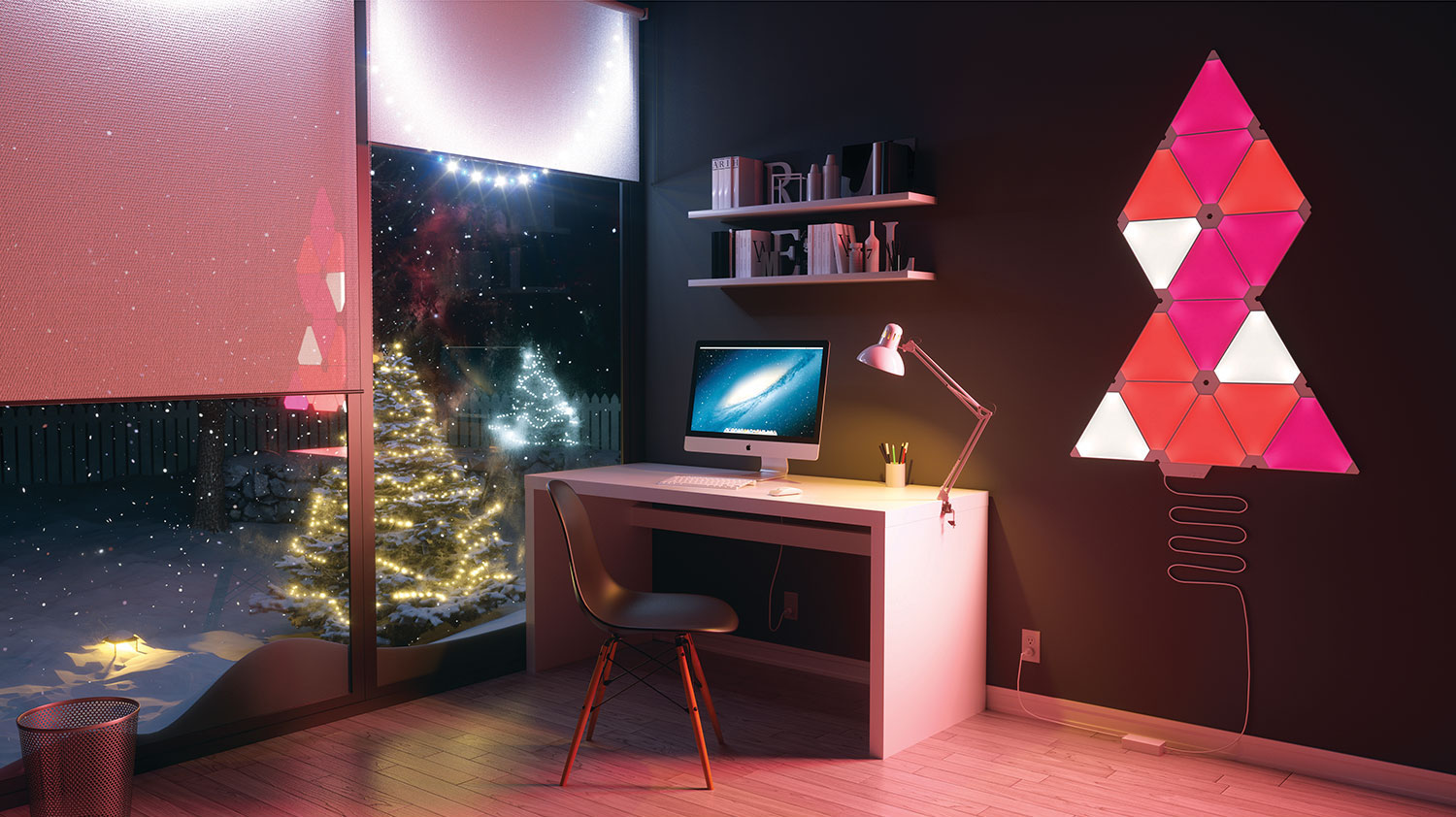
There’s nothing slicker than a smart home, and smart lighting plays a big role in that. The way a room is lit can set the mood for the entire room, so a great lighting setup is a critical part of the home.
Smart lighting comes with three main types of connections, and each has its benefits.
Bridge/Hub smart lighting connections
The easiest (and most common) way to add smart lights to your home is by using a “bridge” or “hub” smart lighting connection. Although an increasing number of smart bulbs connect directly with your smartphone or tablet, most of them don’t.
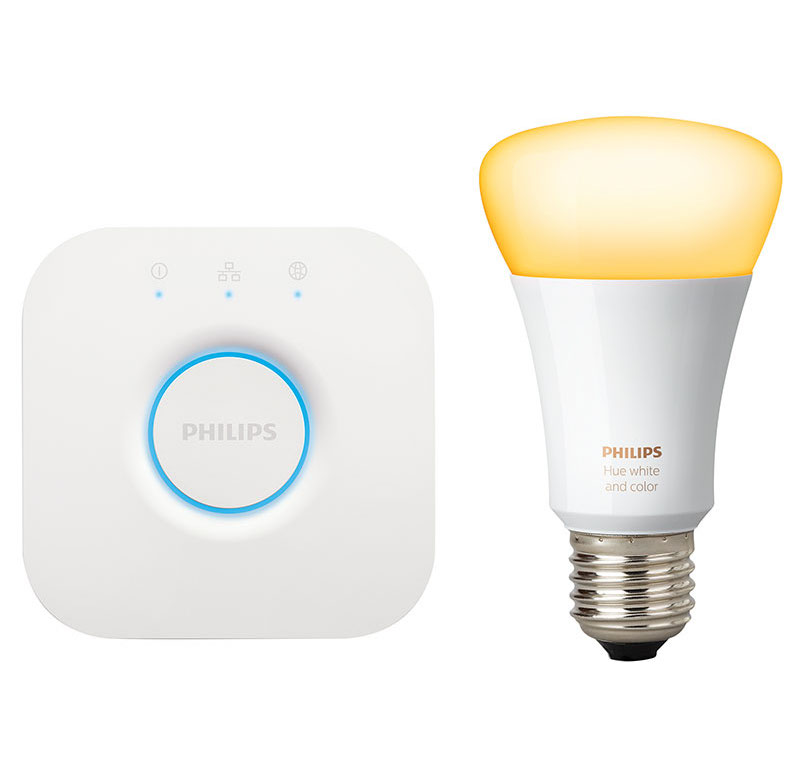 Instead, the majority of smart lights communicate using a protocol called ZigBee. This signal then needs to be “translated” through a bridge or hub device that’s connected to your phone. So, while you’re controlling your smart lights with your phone, you’re actually going through an intermediary: phone, bridge, lights.
Instead, the majority of smart lights communicate using a protocol called ZigBee. This signal then needs to be “translated” through a bridge or hub device that’s connected to your phone. So, while you’re controlling your smart lights with your phone, you’re actually going through an intermediary: phone, bridge, lights.
Bridge connections tend to be a more affordable smart lighting option, so they’re a great choice if you’d like to equip your entire home with smart lights. They’re often offered in a starter kit, so you can get a great deal on a few bulbs alongside your bridge. Additional lights and bridges can then be added on as needed.
Some bridges, like the Philips HUE Smart LED Bridge included in this set, is also noted by popular tech sites as being able to connect to third-party bulbs. This gives you the ease of controlling all of your lights through one app, while also giving you the flexibility of installing bulbs from a mix of brands. If Phillips doesn’t carry a bulb that’ll fit with your socket, for instance, you have the option with a bridge connection to buy a bulb from a different company and pair it with the same bridge regardless.
Finally, some bridges are multi-use, which can be really handy.
The Lutron Smart Bridge Hub acts as an intermediary between compatible smart bulbs and your smartphone, but it can also be used to control things like your thermostat or remote shades.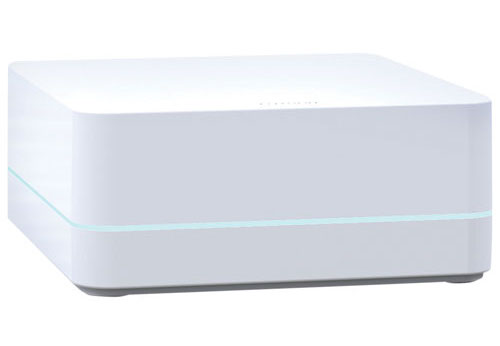
An advanced bridge like the Lutron one has more flexibility than a standard, single, smart lightbulb, and can even geofence your house. In other words? You can dim your lights from your Apple Watch, turn them on with your smartphone, and know with confidence that they’ll all turn themselves off when you leave the house.
Wi-Fi smart lighting connections
The next step up from bridge-based smart lighting is wi-fi smart lighting, which connects directly to your smartphone or tablet. There are quite a few options when it comes to wi-fi lighting, and they’re not all lightbulbs.
With wi-fi-based smart lighting connections, you can also hook up a lighting switch or plug-in to your smart home, allowing you to wirelessly control lights with tungsten bulbs (and other devices). Products like the TP-LINK Wi-Fi Smart Light Switch allow you to turn your lights on and off at will, and to schedule them according to the time of day. If you always turn your lights on at dusk, for instance, the TP-LINK will do it for you.
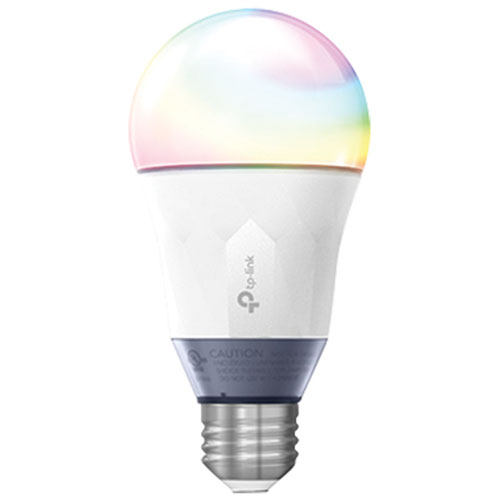 Similarly, the TP-LINK Wi-Fi Smart Plug allows you to control a wide range of devices with your smartphone. The TP-LINK plugs are great because, like the brand’s light switches, they allow you to schedule your plugs. Kasa, the app that they work through, even includes an “Away” mode for when you travel, which will switch your lights and devices on and off at different times throughout the day to deter burglars.
Similarly, the TP-LINK Wi-Fi Smart Plug allows you to control a wide range of devices with your smartphone. The TP-LINK plugs are great because, like the brand’s light switches, they allow you to schedule your plugs. Kasa, the app that they work through, even includes an “Away” mode for when you travel, which will switch your lights and devices on and off at different times throughout the day to deter burglars.
Plugs and switches aren’t your only wi-fi smart lighting options, though. TP-LINK also offers bulbs like the A19 Wi-Fi Smart LED Light Bulb, which will screw into any standard-sized light socket. Like the overwhelmingly popular Philips HUE bulbs, TP-LINK’s version is an LED bulb with colour-changing functionality.
If you’re not planning on tricking out your entire house with smart bulbs, then wi-fi bulbs can be a great option for you. They hook up directly to your device with no bridge or hub necessary, and they’re great for adjusting your lighting throughout the day for the optimal colour temperature or circadian adherence.
Switching to smart bulbs just in your home office, for instance, can help wind your brain down with the sun so that you get a great night’s sleep every night. The Kasa app also lets you set these bulbs to “away mode,” and if you wanted to get really tricky, you could even use your app to monitor your kids’ bedtimes. No more creeping down the hallway to see if the light is on!
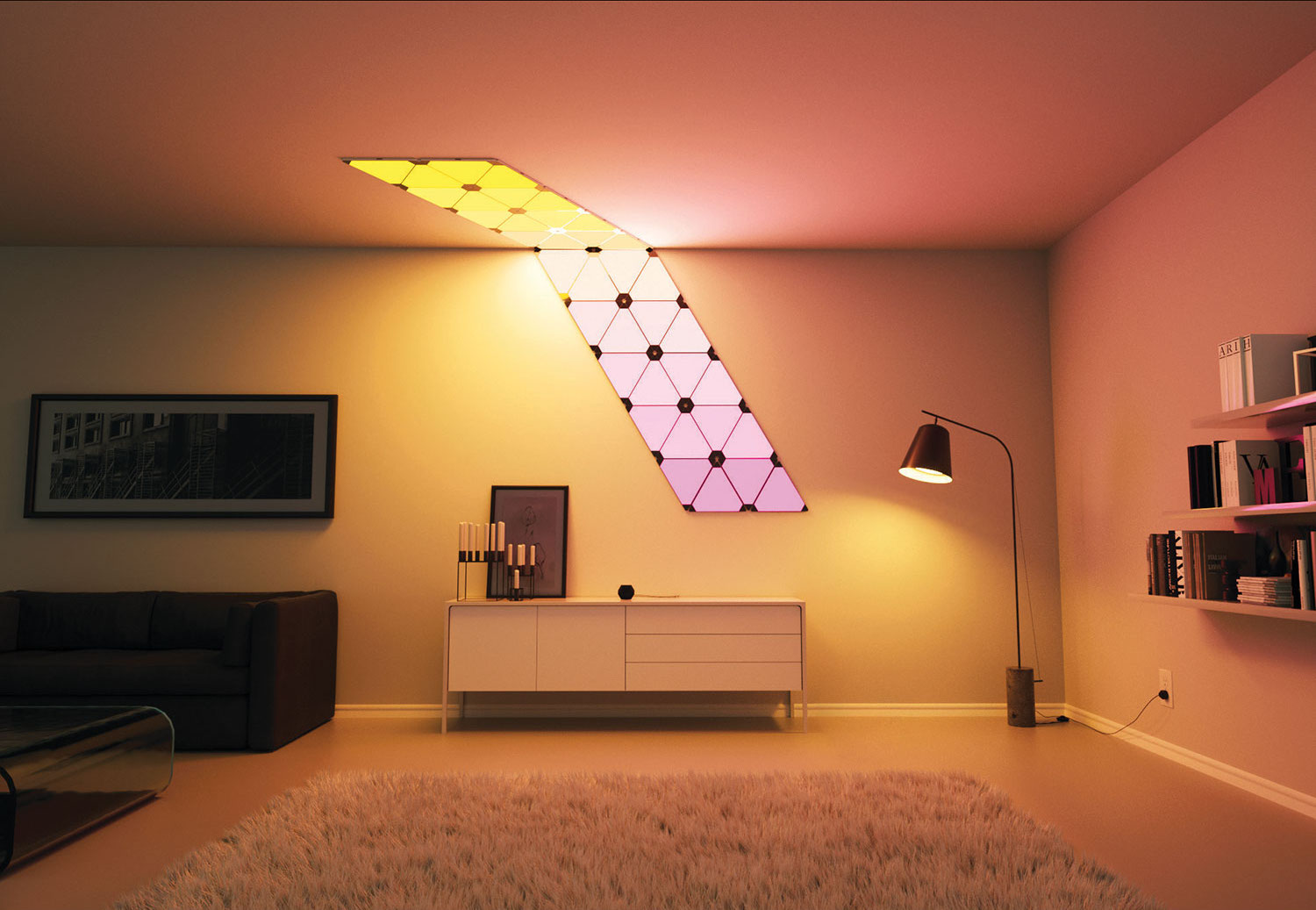 Wi-fi options also include the super cool Nanoleaf Aurora, which is pictured at the top of this post. It’s a nine-panel LED modular kit which lets you set each panel to an enormous range of colours, setting the mood for anything from a child’s room to an evening dinner. The pieces all snap together, too, so they’re as easy to install on your wall as they are to control with your phone.
Wi-fi options also include the super cool Nanoleaf Aurora, which is pictured at the top of this post. It’s a nine-panel LED modular kit which lets you set each panel to an enormous range of colours, setting the mood for anything from a child’s room to an evening dinner. The pieces all snap together, too, so they’re as easy to install on your wall as they are to control with your phone.
Bluetooth smart lighting connections
Finally, we have the cream of the crop: bluetooth smart lighting connections. I find that Bluetooth smart lighting options tend to come from less well-known brands, but they still have major appeal for smart home lovers like myself.
The “why” is pretty simple. If you’re connecting to a bridge device, you have to pair with a bridge, and then with your smartphone. If you’re connecting through wi-fi, then each light is setting up its own little wi-fi network, and you have to switch your phone to each one individually. (My camera does this, and while I love it, it’s a little bit of a pain.)
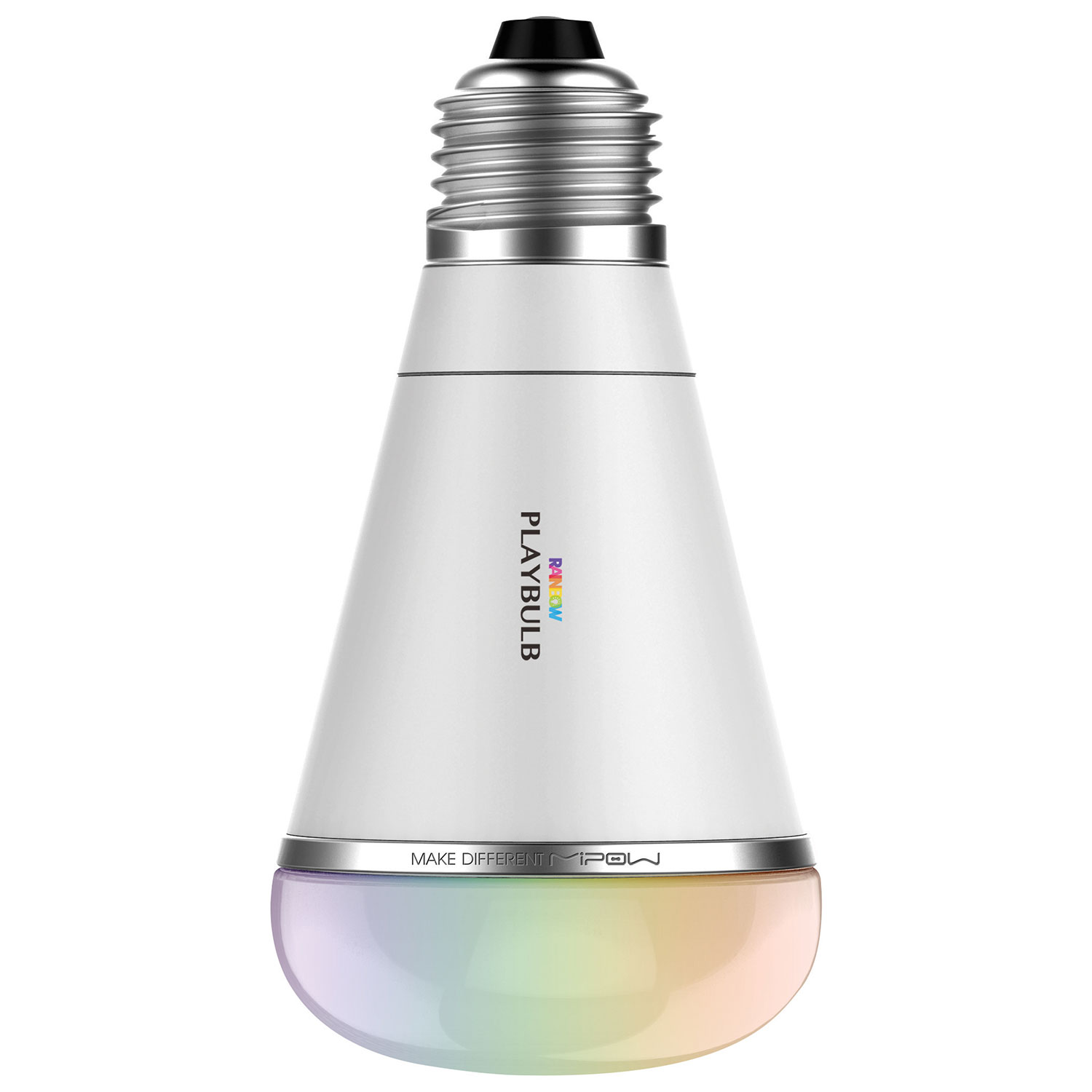 If you’re connecting to a device via Bluetooth, however, there’s no switching necessary. Your smartphone isn’t limited to connecting to only one Bluetooth device the way it’s limited to connecting to only one wi-fi network at a time, and the lights’ apps allow you to modify as many or as few lights at once as you desire.
If you’re connecting to a device via Bluetooth, however, there’s no switching necessary. Your smartphone isn’t limited to connecting to only one Bluetooth device the way it’s limited to connecting to only one wi-fi network at a time, and the lights’ apps allow you to modify as many or as few lights at once as you desire.
Lights like the ilumi BR30 Outdoor Smart LED Flood Light Bulb and MIPOW PLAYBULB rainbow A19 Smart LED Light Bulb connect directly to your smartphone or tablet and project light in a wide range of temperatures. The ilumi is great for custom scheduling and geofencing; the MIPOW is great for dimmable, long-lasting lighting.
It’s easy to turn your home into a smart home, and as technology develops, it gets easier every day. These smart lighting options are just some of the many ways that you can take your home into the new age.

